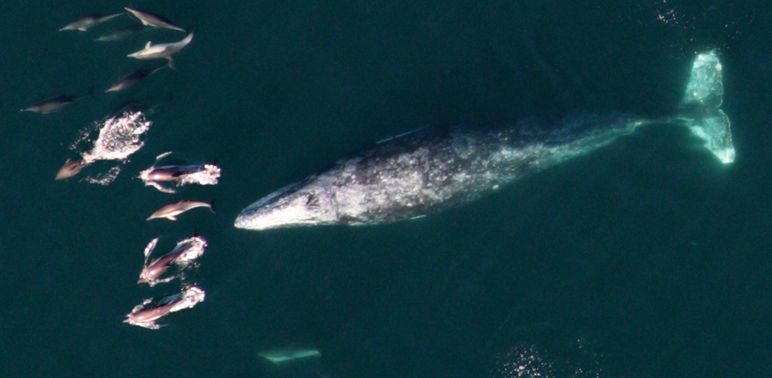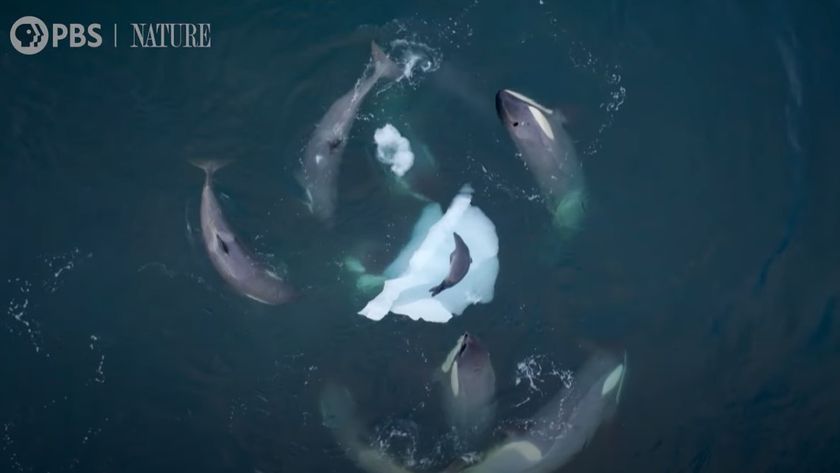
Dolphins Get Free Ride from Gray Whale

Scientists taking stock of cetaceans off California's coast captured an amazing sight from the air: a pod of dolphins enjoying a free ride from a migrating gray whale.
In the photo, a dozen long-beaked common dolphins cruise in front of the gray whale, pushed along by the bigger animal's bow wave. The image was taken from about 600 feet (182 meters) above the water near Catalina Island and published last week by the National Oceanic and Atmospheric Administration (NOAA).
This whale is just one of about 20,000 eastern North Pacific gray whales that migrate each year from feeding grounds in the Arctic to breeding and calving grounds off the coast of Mexico.
Scientists keep track of this subspecies in aerial surveys as part of NOAA's Cetacean Health and Life History Program. Photos from the air can reveal whether the animals are pregnant, well-nourished or accompanied by new calves during their annual journeys.
Indirectly, the images can serve as a barometer for the health of the Arctic ecosystem, since the whales' bodies during migration mirror the conditions in their feeding grounds.
"Gray whales integrate the impacts of climate change into their physical condition, then they swim right by our coast. So we can actually do Arctic research right here from San Diego," Wayne Perryman, a biologist with the whale-tracking program, said in a feature on NOAA's website.
As the Arctic warms, the food supply of the baleen whales is shifting north, meaning the big-bodied marine mammals may have to travel longer to chase their prey. Perryman and his colleagues are examining the relationship between the length of the migration and the rate of successful pregnancies, according to NOAA.
Sign up for the Live Science daily newsletter now
Get the world’s most fascinating discoveries delivered straight to your inbox.
Eastern gray whales were once on the brink of extinction but their population has rebounded in the past several decades. However, their current numbers are likely still a fraction of the pre-whaling population, according to study of ancient whale genes last year.
Follow Megan Gannon on Twitter and Google+. Follow OurAmazingPlanet @OAPlanet, Facebook and Google+. Original article on LiveScience's OurAmazingPlanet.












